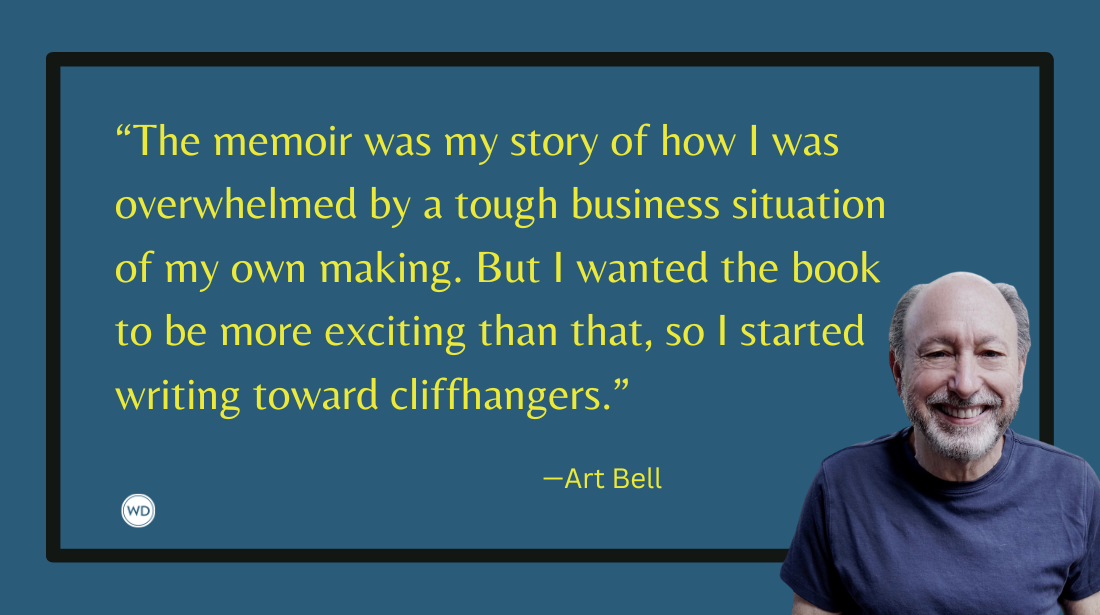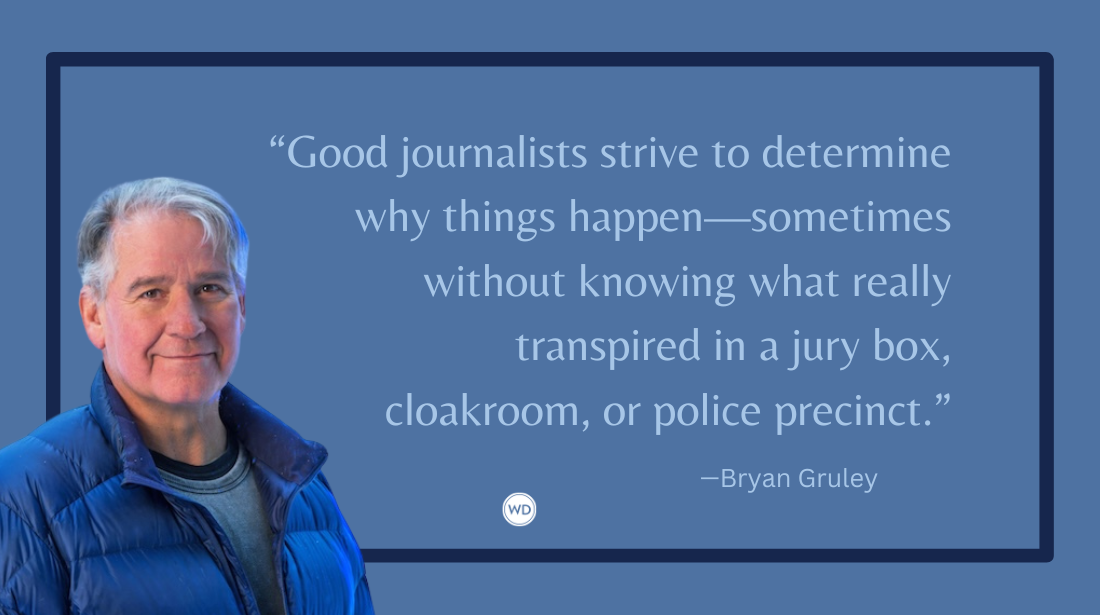5 Tips for Turning a Personal Story Into a Book
Author Grace Ly shares her top five tips for turning a personal story into a memoir—using her personal experience writing one with her father.
“You should write a book.” This was the typical response from my dad’s friends after hearing about our disastrous two-week family camping trip to the Canadian Rockies.
Marty, my father, had in fact documented all the details for therapeutic purposes. Fifteen years later, I found the binder containing his story and thought, This really should be a book! After many years of work and collaboration, my father and I turned his story into the memoir Tent for Seven: A Camping Adventure Gone South Out West.
Order a copy of Tent for Seven today.
Luckily, we had a rough draft to work with. But it needed a major overhaul. We learned so much while transforming his notes into a polished book that we could probably share 100 tips from our trials and errors! In the interest of time and space, we narrowed it down to five.
1. Determine Your Audience
Everyone has a story. But not everyone wants to tell that story to the whole world. And there is nothing wrong with that. Are you writing for your circle of friends and close acquaintances? Your grandkids? The world at large? Your audience will dictate what details you add and what you leave out.
When I first read my dad’s account of our camping trip, I couldn’t put it down. I liked it so much because it was about my family. Our friends would have liked the original draft too. But our target group was the general public, so we deleted many irrelevant sidebars and focused on creating a continuous story that would appeal to a broader audience.
In doing this, we struggled to remember that the reader knew nothing about us or the particulars of our camping trip. This mindset led to assumptions and the omission of important facts and entertaining descriptions—especially when it came to characters. We worked hard to change our perspective.
2. Find Your Bookends
Pick a starting point for your story, a time that will hook the reader. And then determine an appropriate place to end the book. Memoirs, unlike autobiographies, typically focus on a specific period, not your entire life. Jeannette Walls wrote about decades of her life in The Glass Castle. Bill Bryson wrote about several months hiking the Appalachian Trail in A Walk in the Woods. We wrote about two weeks. Whatever time frame you choose, make sure you have enough material. The minimum book length is about 50,000 words.
Tent originally started several months prior to our trip. But that backstory wasn’t interesting enough so we cut it. We chose to end the book when our family boarded a plane back home. Although our story wasn’t completely over at that point, it made for the perfect book ending and left the appropriate amount of material for the epilogue.
After identifying your bookends, you can now shape the story between them. Ask yourself: What was the conflict and how did I resolve it? What did I learn? How did the experience change me? Use the answers to identify themes, develop characters, and craft your story. Adjust where you begin and end accordingly. Use flashbacks and backstory as needed to reveal information about the characters.
3. Let's Be Honest
Accuracy is paramount. If readers find one discrepancy, they will start to question the validity of your whole story—your true story. Memory is malleable, but facts, not so much. Make sure every detail is correct. Double- and triple-check dates, locations, descriptions, names. When we mention a full moon in the opening chapter of Tent—a full moon, mind you, that appeared 51 years ago—we researched the phases of the moon to verify that. It’s impossible to recall dialogue exactly, but do your best to include key phrases each character would use.
Accuracy applies to your character as well. Be honest about who you are and what you experienced. You don’t need to divulge your deepest, darkest secrets (unless you want to!). But you should include the good, the bad, and the ugly—your strengths, flaws, and mistakes. Oftentimes, readers can relate more to your failures than to your successes, plus they’re usually more entertaining. A savvy reader can differentiate a raw story that reads like an untouched photo versus a glamorized story that reads like a filtered Instagram pic.
4. Show Don't Tell
Tent did a lot of telling until we partnered with Sandra Jonas Publishing House. As our editor, Sandra taught us how to show the reader our story through sensory details, emotions, actions, dialogue, and thoughts. This makes for more compelling, engaging writing. This is particularly challenging when you’re writing nonfiction. We are storytellers. We tell stories around the campfire. Kids yell, “Tell me a story!” But if you’re writing a book, you have to show the story, not tell it. For example, instead of writing “Grace loved horses,” we did this:
“What’s that around your neck?” I asked.
“It’s my sweatshirt.” She tied it tighter. “Smells like a horse.” She took a big whiff. “I’m never washing it again…”
5. Entertain Me
To keep the reader interested, add humor if appropriate. Be strict about deleting anything that bogs down the story and isn’t relevant to your themes. Sprinkle interesting facts throughout.
Example: Marty and his buddies hiked the Grand Canyon in July, and since they were ill-prepared, it turned into a real saga. To illustrate how dangerous this was, we wove in details based on this information: The Grand Canyon is the deadliest of all the national parks. On average, 12 people die every year from heat stroke, dehydration, drowning, and even falling off the cliffs.
Speaking of cliffs, leave your readers hanging! When you write the end of a chapter, don’t close out the story—I had a bad habit of this. Give them no choice but to delve into the next chapter, even though it’s three in the morning and they have to work the next day.
Bonus Tip: Create the Dream Team
When it comes to publishing a book, don’t try to do it by yourself. I can write a good story, but I struggle with grammar and spelling (in fact I just spelled “grammar” with an ‘e’). You need a few good people. Do an honest self-assessment, determine your shortcomings, and find people who can compensate. Good luck! I am a huge fan of memoirs and all things nonfiction and look forward to reading your personal story!
Grace Ly worked for the American Red Cross and was stationed on military bases around the world. While living abroad in South Korea, Iraq, and Germany, she traveled the world extensively, visiting more than 30 countries. She returned to the States and accepted an appointment at the White House to promote and foster a culture of service and volunteerism. She continued her own service to her country as an undercover officer for the Central Intelligence Agency. Returning to her passion, she rolled back her cover and became a feature story writer in the Office of Public Affairs at the CIA. Grace has written numerous articles and feature stories for the US military, the American Red Cross, the White House, and the CIA. She lives in Charlotte, North Carolina, with her British husband, young son, and Friesian horse. Connect with her at gracelyauthor.com.








